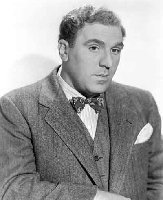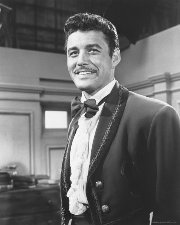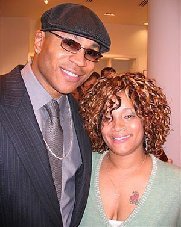
The English word cowboy has an origin from several earlier terms that referred to both age and to cattle or cattle-tending work.
The English word cowboy was derived from vaquero, a Spanish word for an individual who managed cattle while mounted on horseback. Vaquero was derived from vaca, meaning "cow", which came from the Latin word vacca. "Cowboy" was first used in print by Jonathan Swift in 1725, and was used in the British Isles from 1820 to 1850 to describe young boys who tended the family or community cows. Originally though, the English word "cowherd" was used to describe a cattle herder (similar to "shepherd", a sheep herder), and often referred to a pre-adolescent or early adolescent boy, who usually worked on foot. This word is very old in the English language, originating prior to the year 1000.
By 1849 "cowboy" had developed its modern sense as an adult cattle handler of the American West. Variations on the word appeared later. "Cowhand" appeared in 1852, and "cowpoke" in 1881, originally restricted to the individuals who prodded cattle with long poles to load them onto railroad cars for shipping. Names for a cowboy in American English include buckaroo, cowpoke, cowhand, and cowpuncher. Another English word for a cowboy, buckaroo, is an anglicization of vaquero (Spanish pronunciation: [baˈkeɾo]).
Today, "cowboy" is a term common throughout the west and particularly in the Great Plains and Rocky Mountains, "buckaroo" is used primarily in the Great Basin and California, and "cowpuncher" mostly in Texas and surrounding states.
Equestrianism required skills and an investment in horses and equipment rarely available to or entrusted to a child, though in some cultures boys rode a donkey while going to and from pasture. In antiquity, herding of sheep, cattle and goats was often the job of minors, and still is a task for young people in various Developing World cultures.
The arrival of horses was particularly significant, as equines had been extinct in the Americas since the end of the prehistoric ice age. However, horses quickly multiplied in America and became crucial to the success of the Spanish and later settlers from other nations. The earliest horses were originally of Andalusian, Barb and Arabian ancestry, but a number of uniquely American horse breeds developed in North and South America through selective breeding and by natural selection of animals that escaped to the wild. The mustang and other colonial horse breeds are now called "wild", but in reality are feral horses—descendants of domesticated animals.
American cowboys were drawn from multiple sources. By the late 1860s, following the American Civil War and the expansion of the cattle industry, former soldiers from both the Union and Confederacy came west, seeking work, as did large numbers of restless white men in general. A significant number of African-American freedmen also were drawn to cowboy life, in part because there was not quite as much discrimination in the west as in other areas of American society at the time. A significant number of Mexicans and American Indians already living in the region also worked as cowboys.
The history of women in the west, and women who worked on cattle ranches in particular, is not as well documented as that of men. However, institutions such as the National Cowgirl Museum and Hall of Fame have made significant efforts in recent years to gather and document the contributions of women.
There are few records mentioning girls or women working to drive cattle up the cattle trails of the Old West. However women did considerable ranch work, and in some cases (especially when the men went to war or on long cattle drives) ran them. There is little doubt that women, particularly the wives and daughters of men who owned small ranches and could not afford to hire large numbers of outside laborers, worked side by side with men and thus needed to ride horses and be able to perform related tasks.
Why not try something new that everyone will love? Yes, we’re talking about serving U.S. Farm-Raised Catfish along with your traditional favorites. Team it up with roast beef and you have the best Surf & Turf ever; next to a spiral cut ham and it’s a welcoming lighter option that’ll be the talk of the meal. And with it being so available and priced right, you can’t miss.
- 6 U.S. Farm-Raised Catfish fillets
- Onion powder for sprinkling
- 6 (1-ounce) slices Swiss cheese, cut in half diagonally
- 2 cups sliced fresh mushrooms
- 1 (10-1/2-ounce) can condensed cream of mushroom soup
- 1/2 cup dry white wine or vegetable broth
- 2 tablespoons diced pimiento
- 1 tablespoon chopped fresh parsley
- 1 1/2 cups crushed herb-seasoned classic stuffing mix
- Dried rubbed sage for sprinkling
- 6 tablespoons butter, melted
- Preheat oven to 350º. Coat a rimmed baking sheet with cooking spray.
- Place catfish fillets on baking sheet and sprinkle lightly with onion powder. Top each fillet with 2 pieces of Swiss cheese and sliced mushrooms.
- In a medium bowl, mix together the soup, wine or broth, pimientos, and parsley; pour over fish. Sprinkle stuffing mix over the top and lightly sprinkle with sage. Drizzle butter over the stuffing.
- Bake 25 to 30 minutes or until fish is cooked through in center and flakes easily with a fork.

1944 – Marjoe Gortner, American evangelist
1968 – LL Cool J, American rapper and actor
Please remember to keep your pets safe and comfortable in the pet clothing and costumes that you choose.Tips for dressing up your pet:
- If your pet just doesn’t like dressing up, let them sit this holiday out.
- Be sure it fits. Restricting movement or ability to breathe can cause injury or illness.
- Many pets like to chew. Avoid loose or dangling pieces which can cause choking hazards.
















